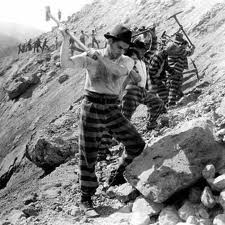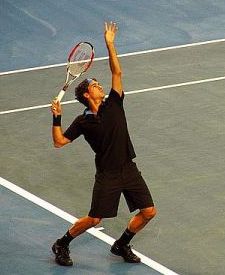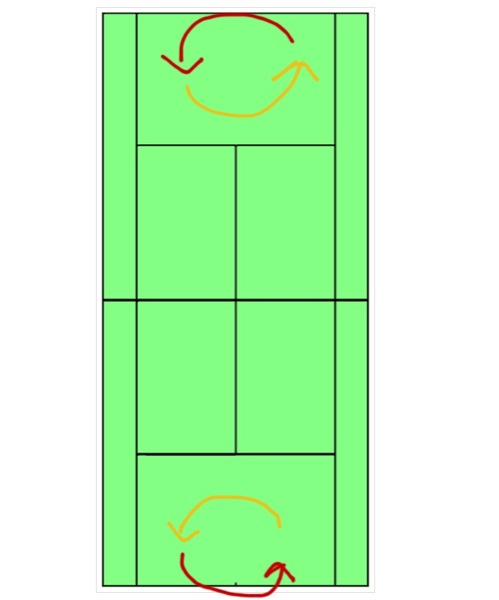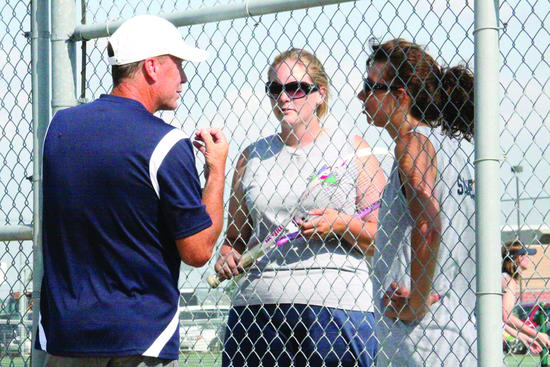Break More Serves
 Thursday, October 18, 2012 at 01:40PM
Thursday, October 18, 2012 at 01:40PM  CAtennis
CAtennis  You are not going to win many tennis matches unless you figure out a way to hold your serve and also break your opponent. Mentally, you should be prepared to break your opponent at least 4 times per match - one break per set to neutralize the effect of your own serve being broken (a loose point + a double fault + bad luck + good point played by opponent = easy to see how you can get broken at least once or twice a macth) and one break per set to gain an advantage over the opponent.
You are not going to win many tennis matches unless you figure out a way to hold your serve and also break your opponent. Mentally, you should be prepared to break your opponent at least 4 times per match - one break per set to neutralize the effect of your own serve being broken (a loose point + a double fault + bad luck + good point played by opponent = easy to see how you can get broken at least once or twice a macth) and one break per set to gain an advantage over the opponent.
So here are some Dos and Don'ts for getting more breaks in your favor:
1. DO pay attention to your opponent's motion. Most players have "tells" in their motion which indicate where they are going to serve. The movement of their hips and their ball toss are the most obvious points of focus for your eyes. But also see if you can pick up cues from the opponent's grip, his stance, and also serve positioning (closer to the center v. further away).
2. DON'T be a hero. A lot of players want to make the highlight reel with their returns. Often, they try to hit a winner off their opponents' first serves or good second serves. If the opponent has a good serve doing so is a risky proposition. Yes, if the serve is a sitter than you can take some chances. However, if the opponent has a decent serve, the smarter play is to hit an aggressive return deep into the middle of the court. Doing so ensures that you're not fliting with the lines or changing the angle of the ball. If you hit a good return down the middle you have been successful at neutralizing the server's advantage. Now you can pressure him with your ground strokes.
3. DO change your return positioning. A lot of players return serve from exactly the same spot. Just like servers should think about serving from various spots along the baseline in order to exploit different angles, returners should also seek to give the servers a different "look". Sometimes, stay more to the backhand, other times slide more to the forehand; stay further back and move in; stay further in and move back. The key is trick your opponent to server into your wheelhouse so that you can take control of the point. If you're just a stationary mannequin, the server will develop a blind spot with regard to your presence. At that point, it's just a serving practice for him. Make him think that unless he does something special you are there to put him on his toes.
4. DON'T assume that your opponent will just serve to your weak shot. A lot of returners become obsessed with protecting their weak wing (e.g. backhand) so much that they fail to register the times they are beaten to their strength (e.g. forehand). Especially on key points (e.g., 30-30; 30-40) look for the opponent to sneak a good serve to your strength and then swing the next shot to your weakness. It won't happen every time but if you stay clear-headed you will spot the times when the server will attempt to neutralize your strength.
5. DO pressure the opponent's second serve. Once a game or, if you're comfortabe, even more try to come in on your opponent's second serve. Whether through a chip-and-charge play or topspin approach, force your opponent to pass you. Even if she does manage to get the ball by you, she will put more pressure on her second serve next time around which can result in more double faults. Passing shots are difficult to hit under pressure (if you move quickly and shut down the angles, the passer has very little room to work with) and the more you are willing to come in the more successful you will become at this play.
6. DON'T approach the returns with a baseline mentality. It's helpful to think of returns are "topspin volleys" rather than ground-strokes. Groundstrokes are "swing-based" (power and control come mostly from the swing) where volleys are "movement-based" (power and control come mostly from your legs with controlled racket movement). Because of the nature of the situation (servers have an initial advantage), if you approach the returns with the mentality that you will swing at the ball, you will miss or mishit quite often. However, if you're thinking that you will utilize the server's pace against him (withough generating too much on your own), your movements will be quicker and more precision. Visualize smothering the bounce by moving forward and relying on shoulder turns rather than holding your ground and swinging "from your heels". With practice, your reaction will improve and you will give the server a shorter time to react.
7. DO pay particular attention to critical games. In the first game of the set, it's easy to break a server who is not properly warmed up. Don't use this game as a "gimme"; seek to break the server right away. This is a golden opportunity that too many players do not take. Later in the set, it's easy to break a server who is fatigued. Pay attention to what is going on the other side of the net and see if the opponent is truggling physically. Make this server work for points. Don't give away points by going for wild returns. Stay disciplined. In the third-fourth game on your opponent's serve (i.e., when the opponent is warmed up but not tired), see if you can spot serving patterns. Humans are creatures of comfort...we practice in patterns and we play in patterns as well. Some players don't even know that they are starting every game with a serve down-the-T (or out wide). They do it without thinking because this is what comes naturally to them. If you think that you have a good read on your opponent's serving patterns, it's OK to take a guess once or twice by moving towards one corner or another (of course, don't "telegraph" your anticipation).
8. DON'T overcomplicate the plays. Once the return is back in play, keep things simple. Some payers tend to think "ohmygod, ohmygod, I got the serve back now I have to do something special because she's going to hit a winner or blah-blah-blah." Realize that these thoughts are based on your body's adrenaline levels. Stay cool and work the point (not "pushing" but hitting comfortable yet pressing shots). Know that the pressure is on your opponent to do something to save her skin. Your job is to stay loose and in motion so that you are in optimal position to capitalize in the event the server trepidates on her second or third shot. Make the server work for her holds and you will not only get more break opportunities but you will relieve pressure off your own serve.





